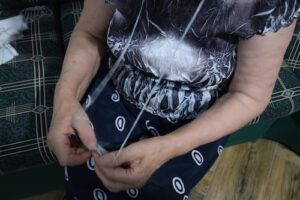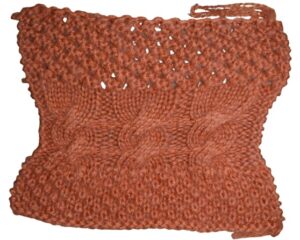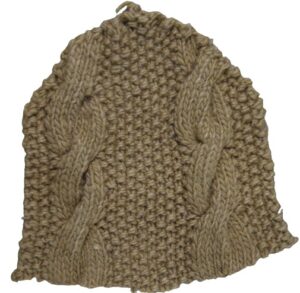Knitting with needles dates back to the 17th century, as early traces of this craft have been found across eight ethnographic areas of Gjirokastra. This type of knowledge-making flourished in the 18th century. It is practiced with 2 or more knitting needles and different threads as desired.
The process begins with drawing “loops” and further to this, knitting stitches into every single loop through the needles by different techniques to come up with a variety of stitches.
The basic knitting technique is “stockinette stitch” and “garter” stitch.
Some types of workpieces are:
1- Sleeve; This type of work is practiced with 5 needles. It starts from the cuff part with a drawing of loops according to the wrist circumference. The process on this part goes along a seamless and no-joins sleeve.
2- Hem: Knitting in this part is practiced with 2 needles and is mainly used for small kids’ clothing.
3- Braid stitch; The width and length of the braid are determined as desired and depending on the number of working yarns being braided. Technically, loops of yarns are divided into 2 groups, which are “ply-twisted” or interlocked with one another (the first half on the front goes to the back and the other half on the back is brought to the front).
4- Rice stitch; Stitches take turns from one row to the next. The stitches alternate between the stockinette pattern and the grater pattern along every row.




